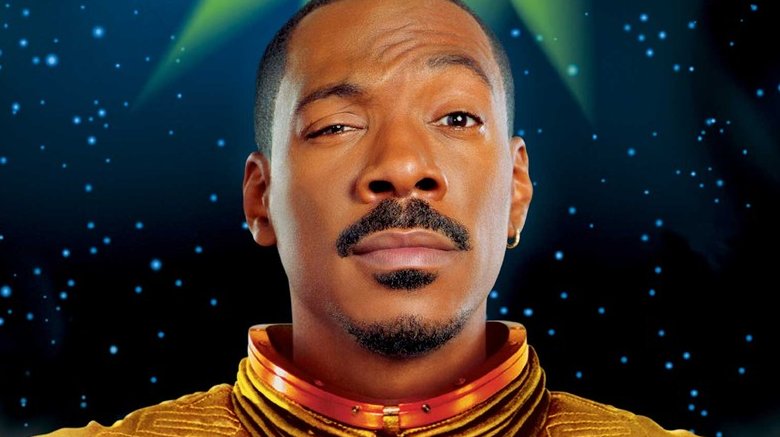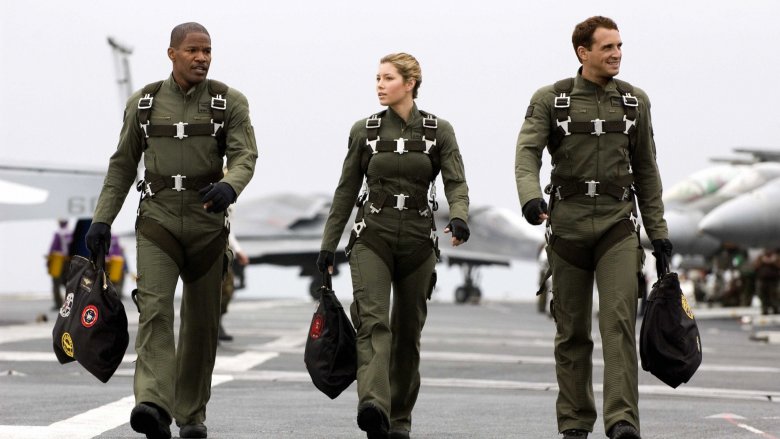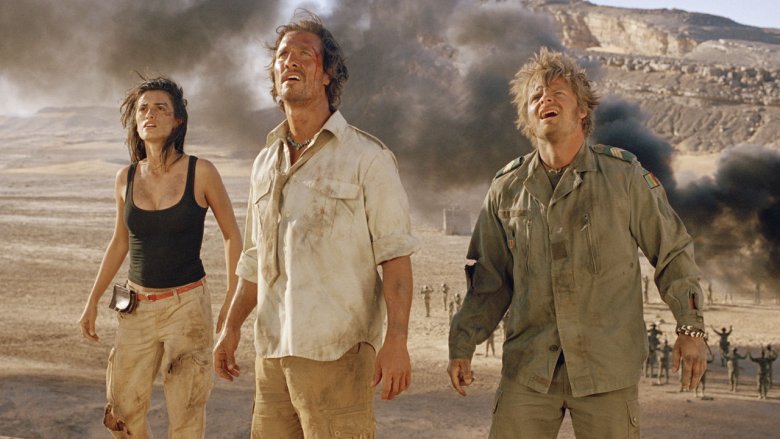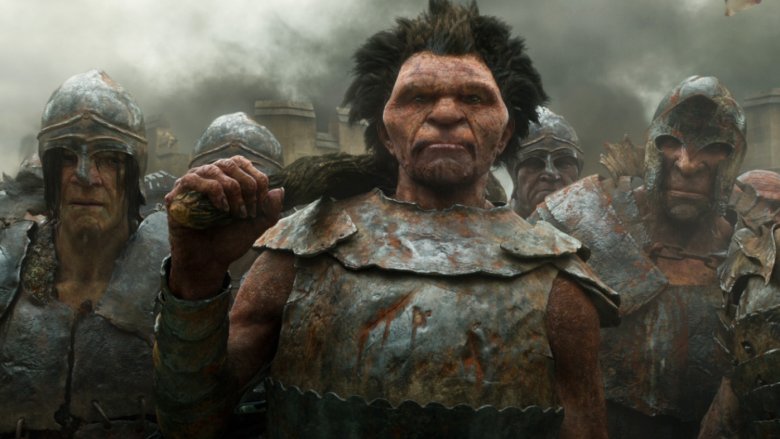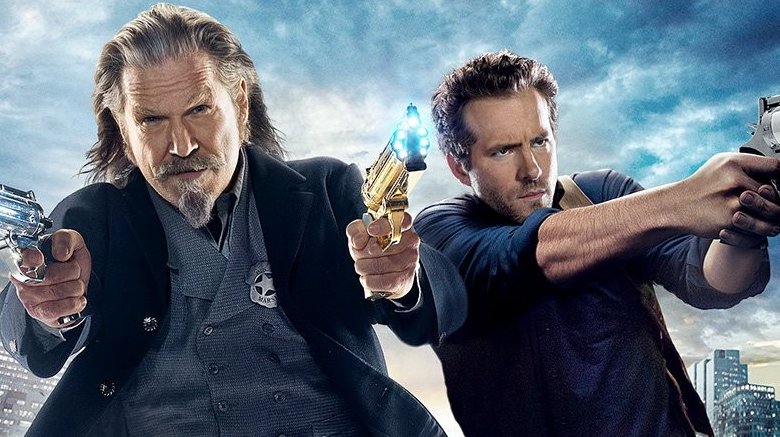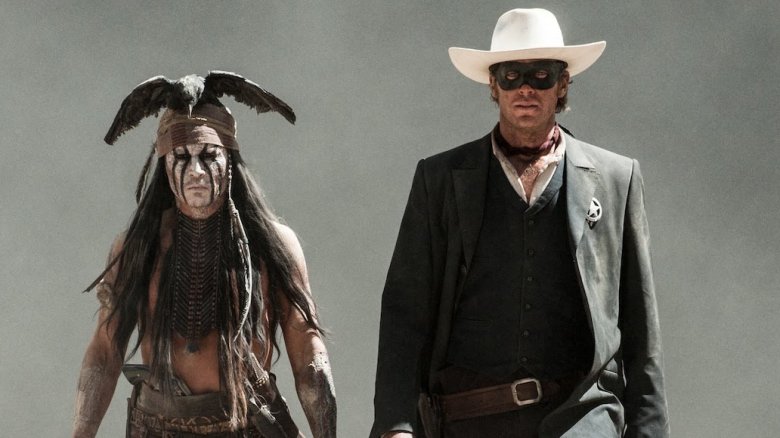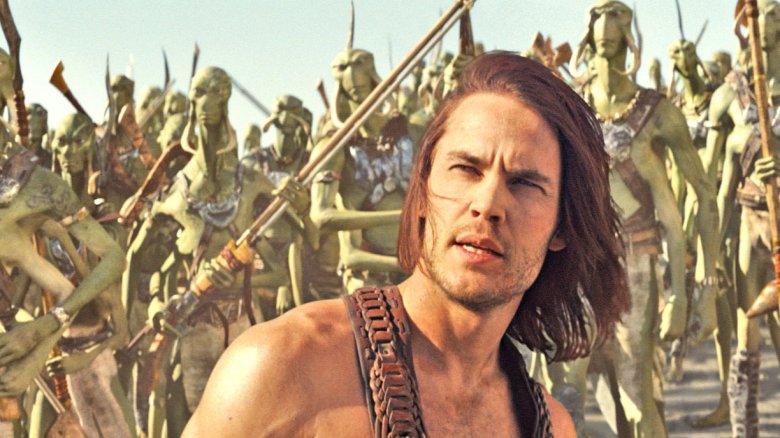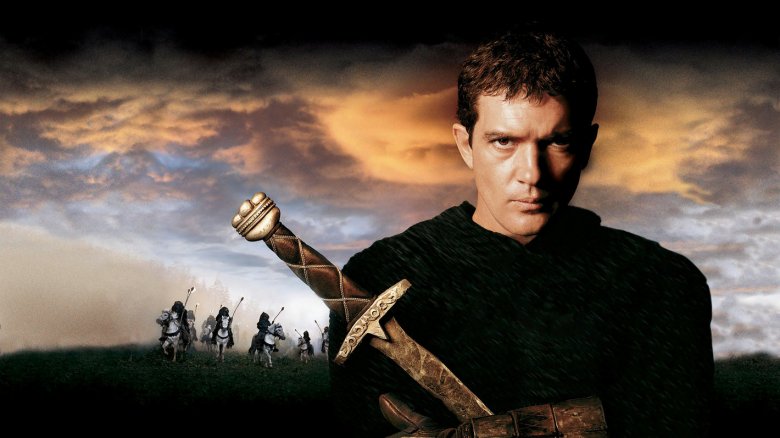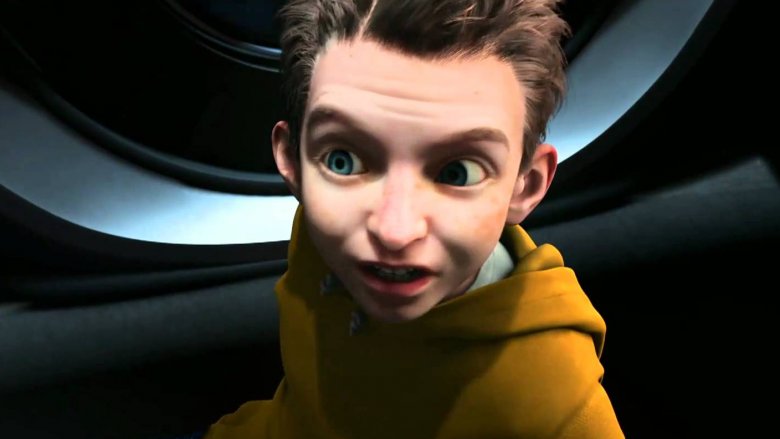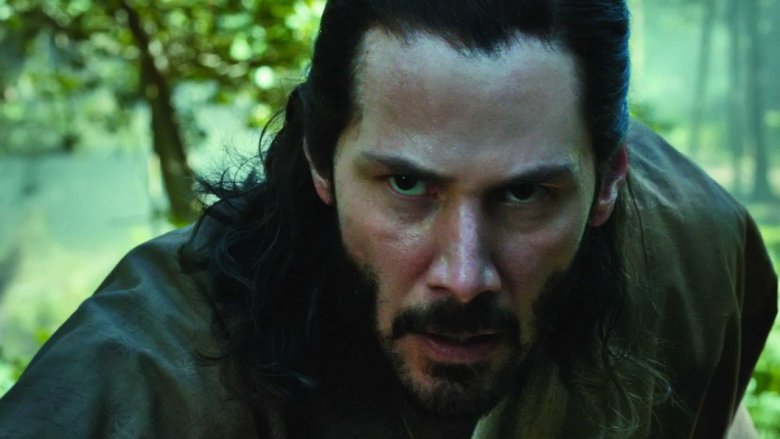The Most Expensive Movie Flops In History
Movies take a staggering amount of money to make, to the point that a budget below $50 million (that's a "50" with six zeros after it) is considered mid- or even low-budget. It usually works out in the end, since movies also make a staggering amount of money, but not all movies are so lucky. Here are some of the most expensive movie flops in the history of cinema, ranked without adjustments for inflation.
The Adventures of Pluto Nash (2002)
It might be hard to imagine now, but there was a time when Eddie Murphy's presence in a movie was basically a cheat code to box office success. The man made Trading Places, Coming to America, and even The Nutty Professor a success, and his stand-up movies were also incredibly popular. Those days were over long before The Adventures of Pluto Nash arrived. Still, the high concept sounded great—"Eddie Murphy as Han Solo" could have been a slam dunk. The movie just didn't connect with audiences, however, earning back only $7.1 million of its reported $100 million budget.
It's not hard to see why the film fared so poorly. It's (to put it mildly) a complete mess for everyone involved—mediocre special effects, a confusing and unfunny script, and a nonsensical future setting. Hoping that a science-fiction comedy could be successfully anchored purely on Eddie Murphy's ability to attract a crowd was a big gamble, and ultimately that $100 million budget was too much to wager.
Stealth (2005)
You might not recognize Rob Cohen by name, but you almost certainly remember his movies—or their star, Vin Diesel. Cohen directed both The Fast and the Furious and XXX, which makes him at least partly responsible for the Vin Diesel era we're currently living in. That couldn't save him, however, when Stealth flopped, potentially spelling the end of Cohen's major movie career.
The movie follows a group of trained Air Force pilots as they try to take down a corrupted AI-controlled jet, and reads more like a science-fiction parody of Top Gun than the guileless, masculine-driven tone of Cohen's more successful movies. It grossed $76 million, but the price tag of $135 million meant it needed to bring in a lot more than that. Maybe with Diesel on board it might have fared better; as it is, Stealth seems to have snuck by moviegoers.
Sahara (2005)
Sahara looked like an attempt at recapturing the magic of Indiana Jones, but it was really an adaptation of a massively successful series of books that's also about a rugged adventurer with a quick wit and a way with women. Unfortunately for everyone involved, the built-in audience for the books didn't translate to a box office success: Sahara grossed a modest $119.3 million that wasn't enough to cover its $160 million budget.
Part of it could have just been poor timing, since the movie starred Matthew McConaughey just a few years before his star power returned in full force. Weirdly, the most surprising fact about Sahara isn't its poor box office, but rather that the writer of the series, Clive Cussler, sued the production company of the movie after the film's failure to live up to his expectations. Even the courts couldn't ultimately decide who should be legally to blame for Sahara's box office failure.
Jack the Giant Slayer (2013)
CGI-animated adaptations of children's stories have never exactly been favorite for most audiences, and Jack the Giant Slayer ended up being no different. Revisiting a fairy tale most viewers knew by heart was a risk to begin with, and director Bryan Singer's movie only scored $65 million at the domestic box office, against a $195 million budget. (It would eventually break even thanks to international returns.)
The movie's underwhelming performance at home means it's generally thought of as a box office failure—when people even think of it at all. Some critics have argued that its failure stems from an inability to combine the mature content of Singer's past films with the studio's desire to make a family-friendly franchise, but either way, the movie's budget was one giant Jack couldn't slay.
R.I.P.D. (2013)
R.I.P.D. has one of the easiest high concept pitches you can imagine. In the world of the afterlife, there's a specialized police force called the R.I.P.D. (Rest In Peace Department) that takes care of renegade spirits before they can affect the human world. It's basically Men in Black with a supernatural twist, and the casting of Ryan Reynolds as the upstart partner to Jeff Bridges' grumpy mentor seemed like a no-brainer. Unfortunately, the movie was pronounced D.O.A., barely making back $78 million of its $130 million budget.
While the failure of certain films can sometimes be attributed to poor marketing, studio interference, or even rival movie releases that are oddly similar, the blame for R.I.P.D. rests pretty entirely on the film itself—it's relentlessly unfunny. For example, there's a running gag about how R.I.P.D. agents are given illusory bodies so regular people can't see them; Reynolds' body looks like an old Chinese man, while Bridges gets a buxom blonde woman as his disguise. It also doesn't help that Bridges and Reynolds seem like they're so bored with the script that they might as well be dead. Maybe they were method acting the whole time?
The Lone Ranger (2013)
The Lone Ranger is a classic part of American pop culture. In the same way that you don't need to be a fan of Superman to know that he stands for "Truth, Justice, and the American Way," The Lone Ranger's catchphrase of "Hi-ho, Silver, away!" has become ingrained in the lexicon. Unfortunately for the makers of 2013's The Lone Ranger, that didn't make much of a difference at the box office, where the film barely made $89 million domestic against its $215 million budget. It eventually recouped another $171 million worldwide, but that didn't make it any less of a failure in the United States.
The odds were stacked against The Lone Ranger. The cast includes Johnny Depp (consistently one of Hollywood's most overpaid actors for years) and the relatively unproven Armie Hammer. The movie's efforts to depict Native American sidekick Tonto in a less-offensive way than past adaptations proved even more difficult when the production came under fire for whitewashing the character by casting Depp. Finally, the movie's budget was astronomical—marketing expenses aren't even usually factored into reported budgets, meaning the movie could have cost more than $300 million in all.
John Carter (2012)
Speaking of classic early 20th-century characters adapted for the big screen, here's John Carter, the adaptation of the seminal works of Edgar Rice Burroughs' Barsoom stories. Unlike The Lone Ranger, the issue of adapting John Carter novels isn't one of recognizability—it's the problem of a piece of work so influential that it looks like it's copying stories that were created decades later. Burroughs' work has influenced everything from Star Wars and Star Trek to parts of the DC Universe, but that didn't make the movie adaptation look any less derivative.
John Carter managed to make $73 million domestically, but it was a drop in the bucket for its $250 million budget. As is the case with many Hollywood bombs, it managed to recoup some losses overseas, but it still added up to an infamous dud that was plagued from the start by lukewarm reviews. John Carter might be less affected by gravity on Mars, but here on Earth, he was brought down hard.
The 13th Warrior (1999)
The 13th Warrior is an adaptation of Eaters of the Dead, a novel by Michael Crichton (of Jurassic Park fame) that loosely adapts the myth of Beowulf. While the film earned some recognition for its expensive set pieces, those costly moments ended up ballooning the film's budget to $160 million, not a cheap price tag in 1999. The box office returns were only $61.7 million, leaving the film with a deficit of almost $100 million.
The movie's failure to find an audience is a bit of a puzzler, since the source material was by a proven bestselling writer and it was directed by John McTiernan (director of Die Hard). Maybe it was the late name change from Eaters of the Dead to The 13th Warrior that made audiences suspicious of the film, or maybe it was the fact that Crichton took over partway through and cut anything he didn't like. Whatever the reasons, the end results were so embarrassing that co-star Omar Sharif ended up briefly retiring from acting in disgust.
Mars Needs Moms (2011)
Mars Needs Moms was an experiment in motion-capture performance, co-produced by legendary director Robert Zemeckis and marketed by Disney, a company fairly well-known for its animated movie acumen—all of which is why it's so weird that the movie ended up being equal parts disturbing and entirely toothless. The story follows a 9-year-old trying to save his mom from being murdered by aliens who want to use her "mom-ness" to power their "nannybots," and the film's effects technology (cutting edge at the time) gives an uncomfortable eeriness to every character's facial expressions.
But rather than an exciting adventure or a surreal nightmare of a film, the end result is more boring than anything. Audiences seemed to agree, as the movie only made $39 million out of its $150 million budget—a jaw-dropping loss for a theatrically released animated movie. Mars may need moms, but Earth certainly didn't need this movie.
47 Ronin (2013)
Box office bombs are often the result of a studio betting too highly on a director or concept, letting the budget balloon out of control, and then interfering with the finished product in a vain attempt to recoup their money. 47 Ronin is a perfect example, with a title that evokes the Japanese historical epic of the same name about a group of masterless samurai who make one last stab at redemption.
The actual movie shares almost nothing in common with the real-life story, adding in monsters, giants, and a half-Japanese lead played by Keanu Reeves just a few years before his performances in Master of Tai Chi and John Wick would restore his critical standing. The director, Carl Rinsch, was known entirely for his shorts work prior, and the massive budget didn't seem to help the fledgling director acclimate. The movie earned a paltry $38 million domestic to match its $175 million budget; the international box office brought it up to $150 million eventually, but it was still a massive all-around flop—and Rinsch hasn't helmed a feature film since.
